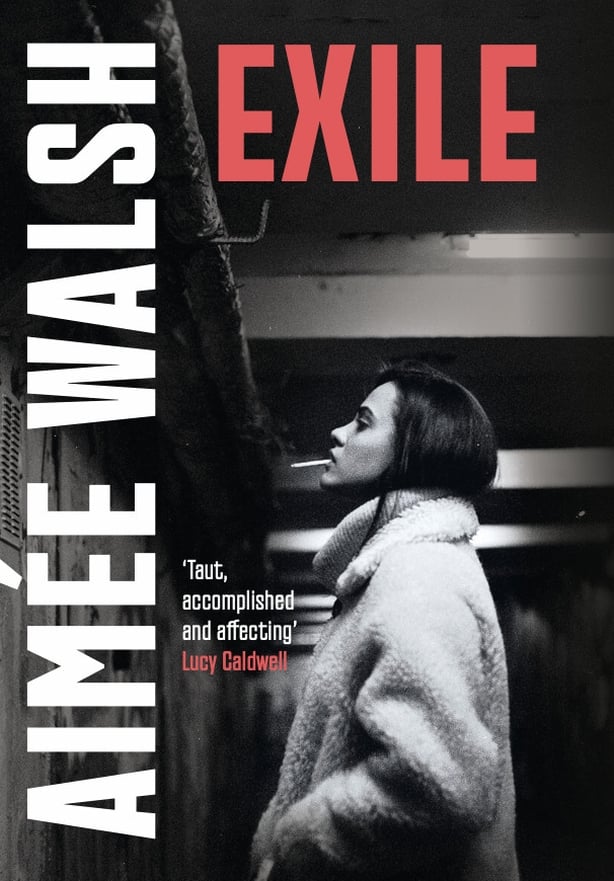Ever dreamed of writing a novel but didn't know where to start? Now’s the perfect time to pick up your pen (or keyboard) and dive into the world of storytelling—no experience needed, just your imagination.
In a new series, author and critic Aimée Walsh offers some tips for the budding novelist.
I never really set out to write a novel. It just sort of happened. I always liked the thought of writing a book but could never envisage what that should or could be. I put it out of my mind, did a critical PhD instead. But when the idea for my debut novel Exile arrived, the impulse to get the story out on paper (or in this case, a Word document) was uncontrollable. In this way, writing Exile felt like a form of madness. I had not done any of the things that I, at that time, thought I had to in order to 'be a proper writer.' With time, this notion of what a writer should be revealed itself to be a fallacy. I hadn’t done a creative writing masters degree nor had I ever been to a writing workshop. I hadn’t sent my work out into the world never mind had it published by any esteemed literary journals. But it didn’t really matter. At that point in my career, writing and publishing was all an unknown to me. What if nobody read it? Or it never got published? No matter, I thought. I couldn’t convince myself that it wasn’t worth doing. I couldn’t not do it.
It was during the pandemic, and I was working in London at the time. Offices and pubs were beginning to open up again. The tubes were getting busier, people forgoing masks to squish brightly coloured vapes in their mouths instead. We had all just spent the better part of a year indoors staring down what felt like the end of the world. So, I reasoned, there wasn’t much to lose by sitting down to write alone in the kitchen. Typing up imaginary scenarios and character traits. Saving the document to re-open it again the same time the following day. The stakes increased when I decided to tell anybody that I was writing, that I thought it was good.
I’m not sure if that feeling can ever be taught, nor do I think that there’s a quick way to conjure up inspiration for your novel-in-progress. It’s a tedious ould business, but there’s ways and means to jolt some power into your creative practice. Over this series, I will give practical tips for bringing the writer out of yourself, for finding your community, and for gaining the courage to send it out into the world. In this first article, we will start at the beginning.

On beginning to write for the first time
It may seem obvious but the first thing to do if you want to be a novelist is to sit down to write. Then do it again and again and again. Repeatedly. Much of the words you write in the early stages will absolutely end up in a word document ominously named ‘The Graveyard’ or ‘Scrapheap,’ but none of these words written are to be treated as a waste of time. By showing up to your desk regularly, you are beginning to strengthen your creative muscles, which, with practice, will guide you on when the build tension, what to conceal from the reader, and when to keep following your imaginative instincts as you sit down with the document.
On reading widely
This too may seem obvious, but it is a point worth labouring: all good writers are first great readers. Read widely and as often as you can. In my late teens, I was given brilliant advice by a lecturer to find any spare moment to read, and to treat it as training. You will not be good at it at first, but you must persevere. As you broaden your scope in genres, time periods and form, you will naturally begin to read like a writer. Question what the writer is doing on the page: why have the chosen the form they have? What about on a sentence level? Are the sentences well formed? What does that mean to you? Do you like it? Why? Interrogate your own tastes. Explore these boundaries further.
Be prepared to let the story take you where it needs to go
When writing my debut novel, I knew what I wanted the overall story to achieve: it was the protagonist Fiadh’s story of alienation from her home and her own body. Often with writing, it feels like a conjuring. I had to let the world in which Fiadh lives – 2008, Belfast or Liverpool – form in my head. I had to be led entirely by this imaginary friend I had created for myself, for the readers. So, don’t be prescriptive about the story when you’re drafting. Let the story develop in the ways in which it needs to.
Think about form, style, and the message you want your story to convey
As you write, begin thinking about the message you want your work to say to the reader. Or indeed whether having ‘a message’ is important to you. It might not be, but it’s important to interrogate where you stand on this front. A great example of the form of the text reinforcing the message is: Maddie Mortimer’s Maps of Our Spectacular Bodies (2022). The novel is a coming-of-age story while a parent comes to the end of their life. The words on the page take a swirling, chaotic form, as grief takes hold of the narrator. It’s brilliant. If you’re interested in the interplay between form and plot, this is a great place to start.
Aimée Walsh's novel Exile is published by John Murray Press - read an extract here.
